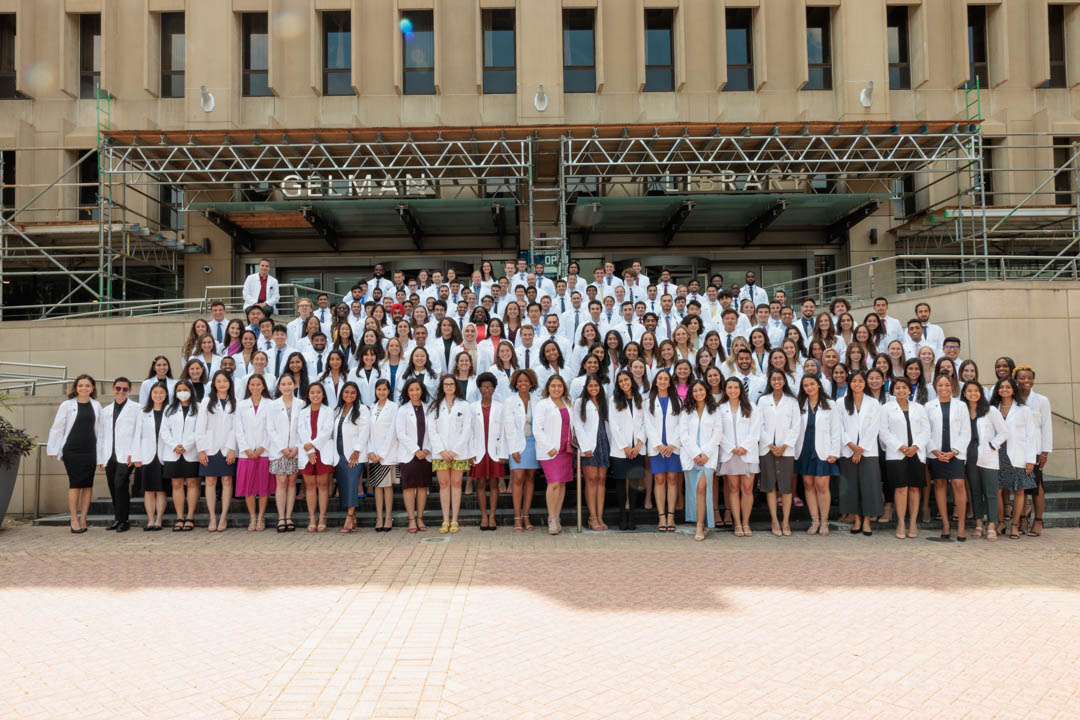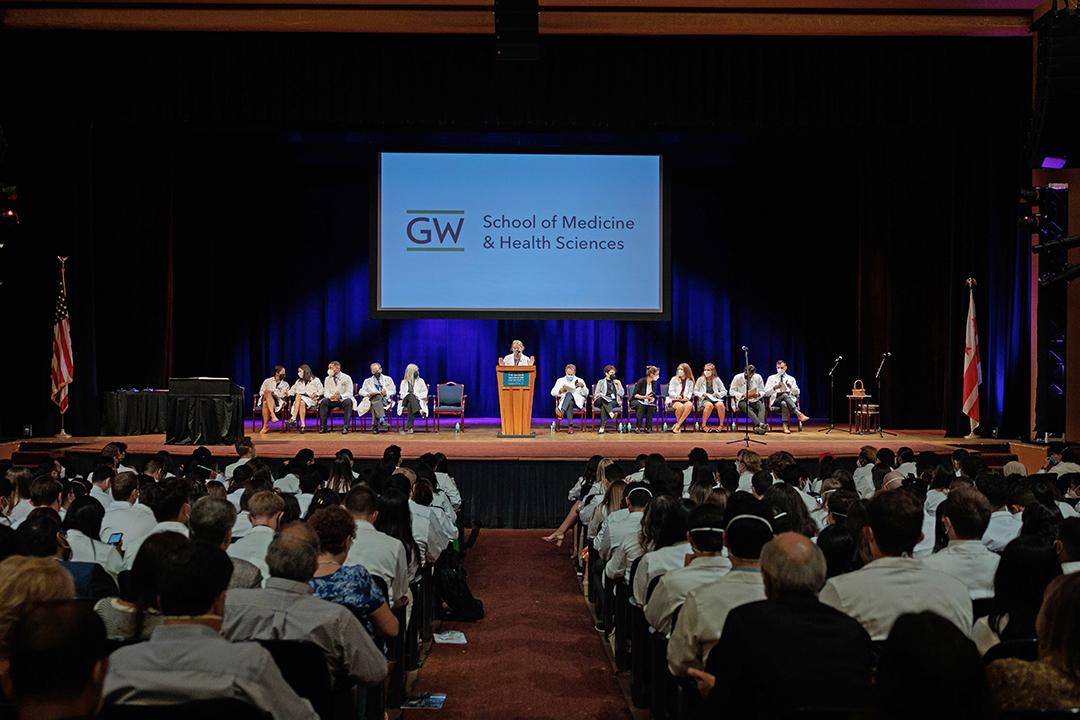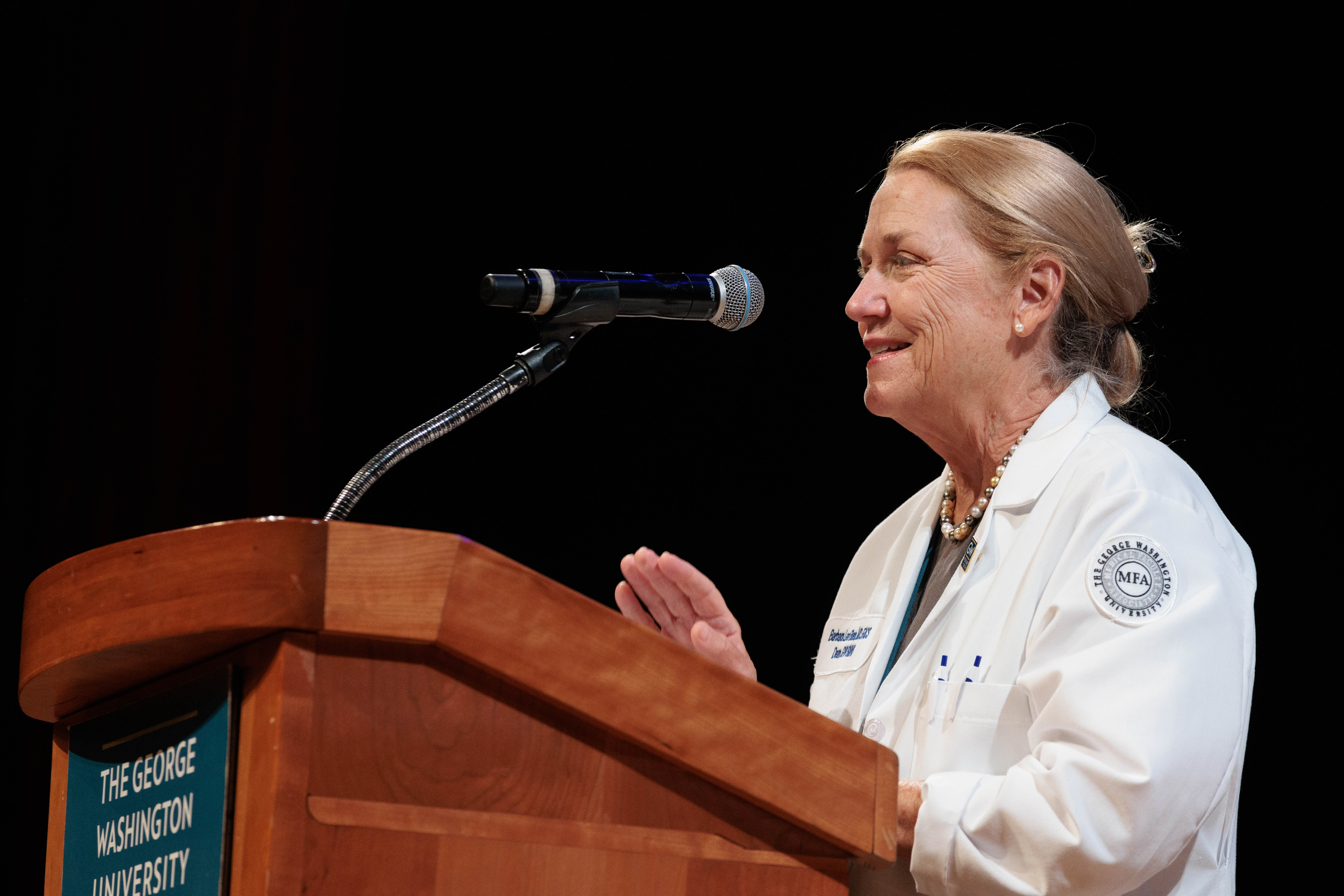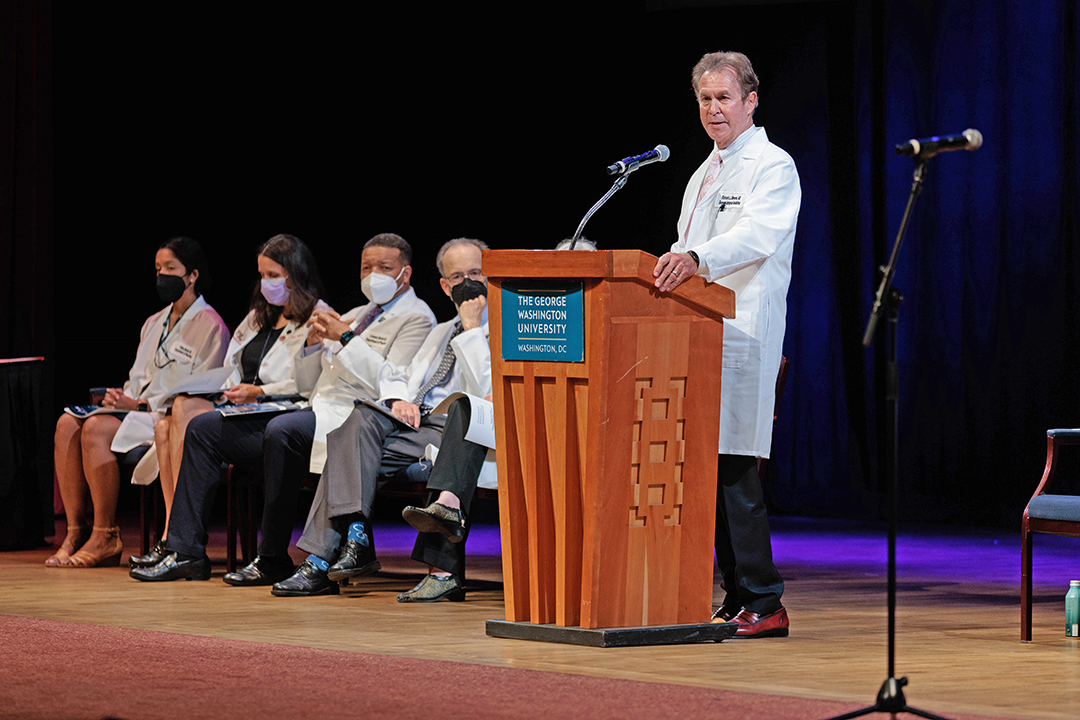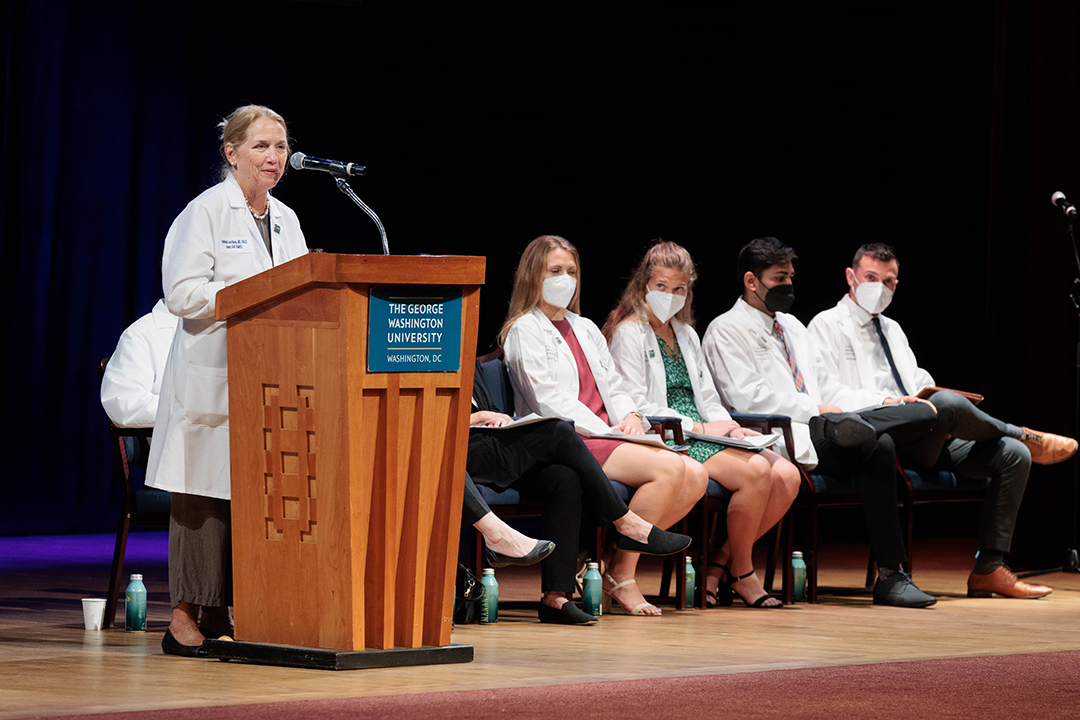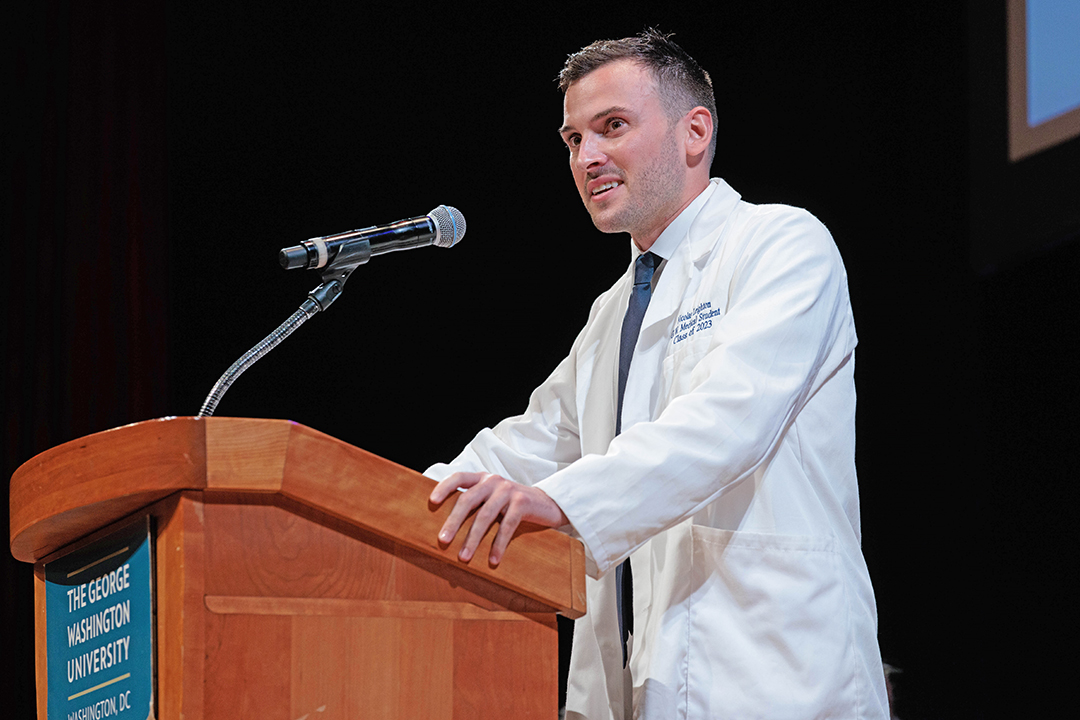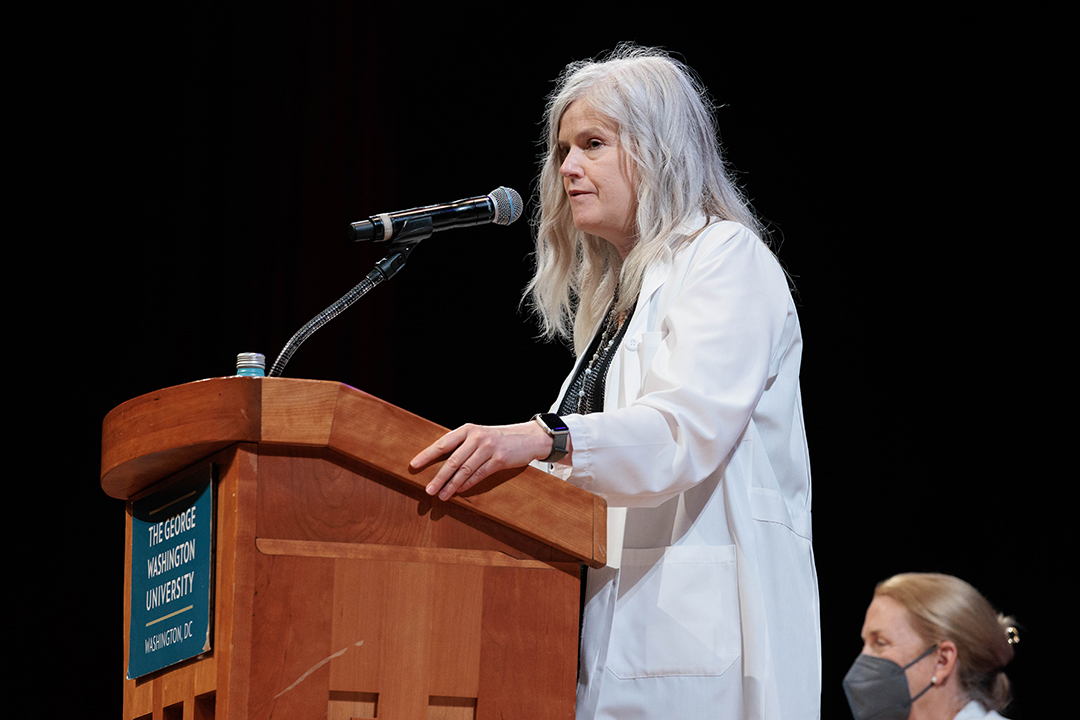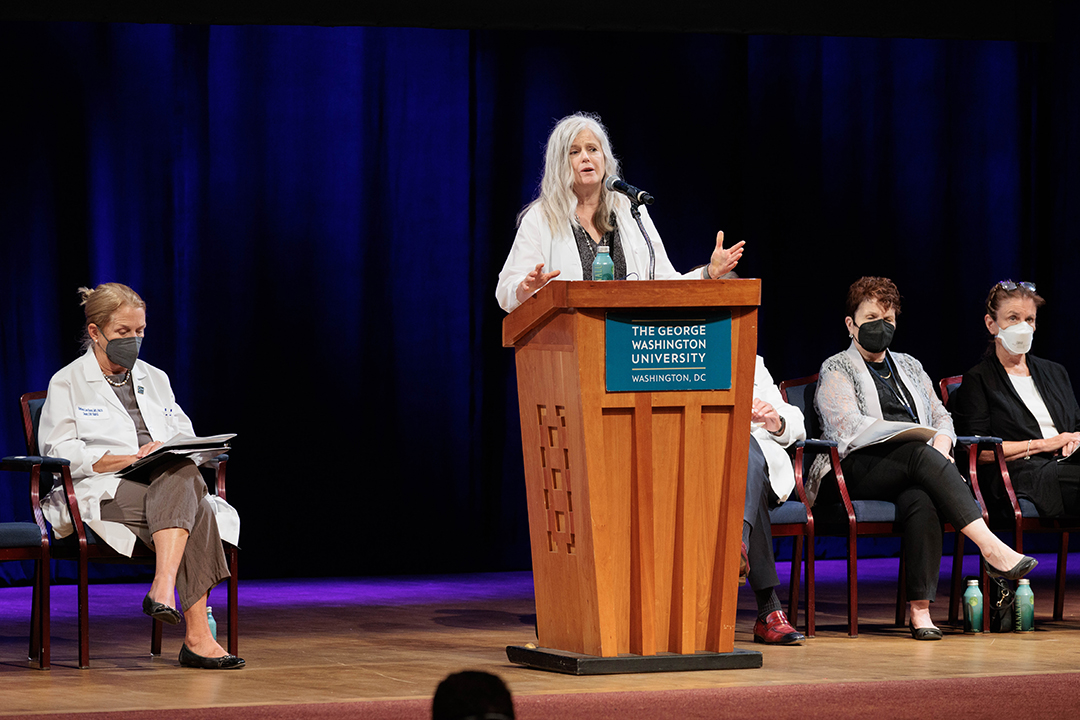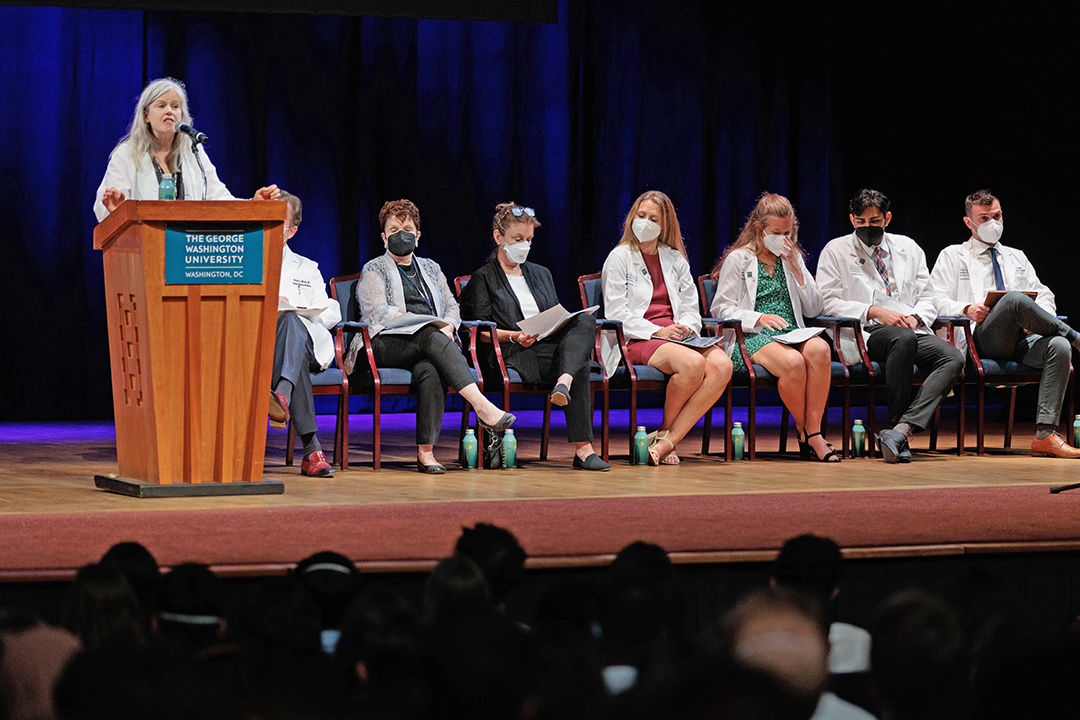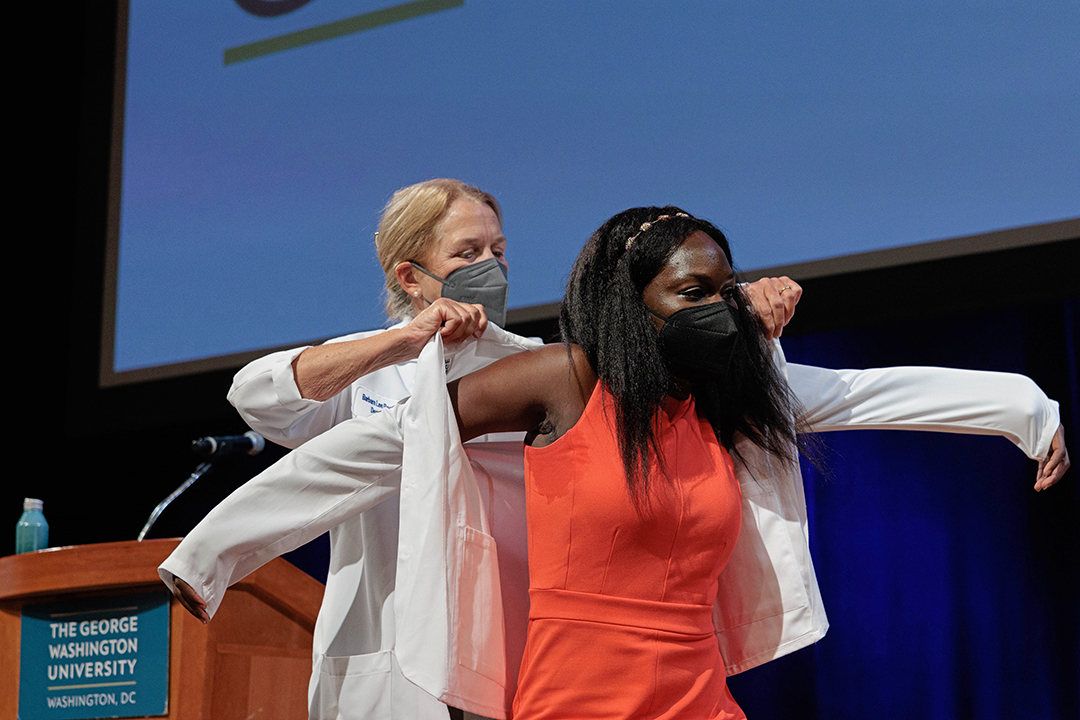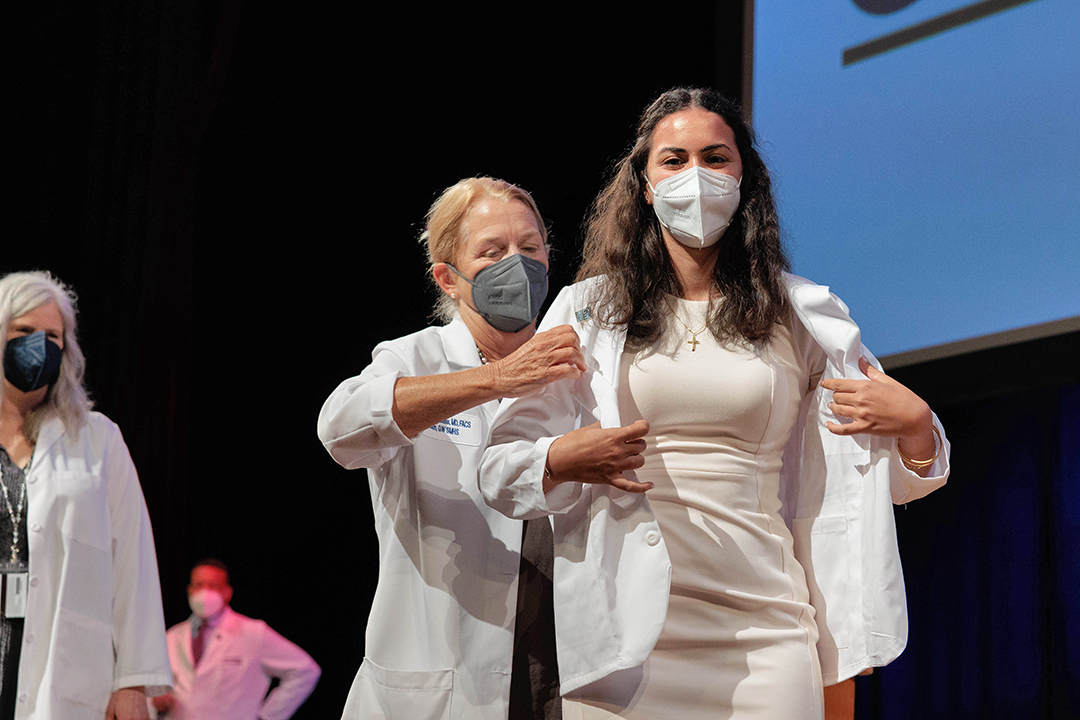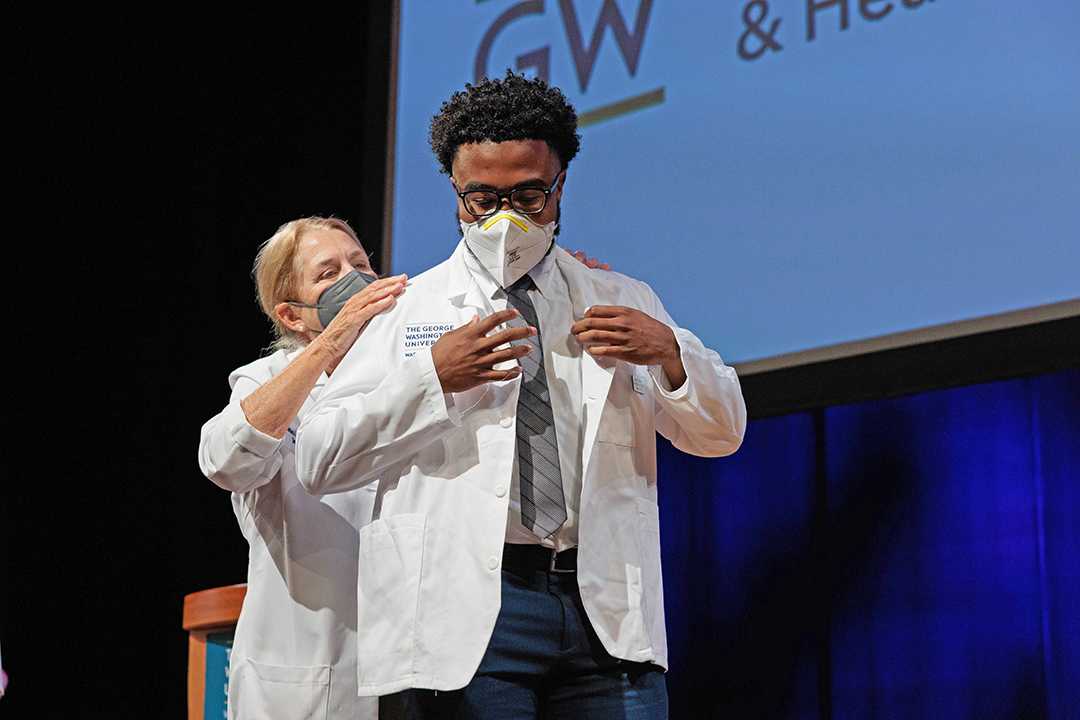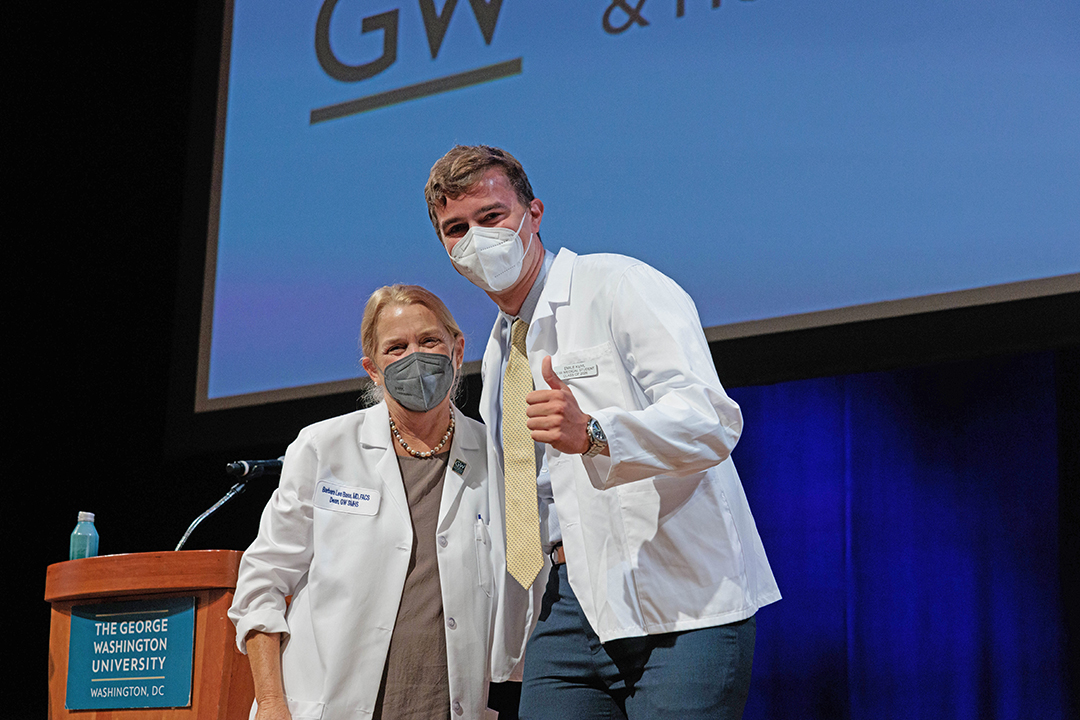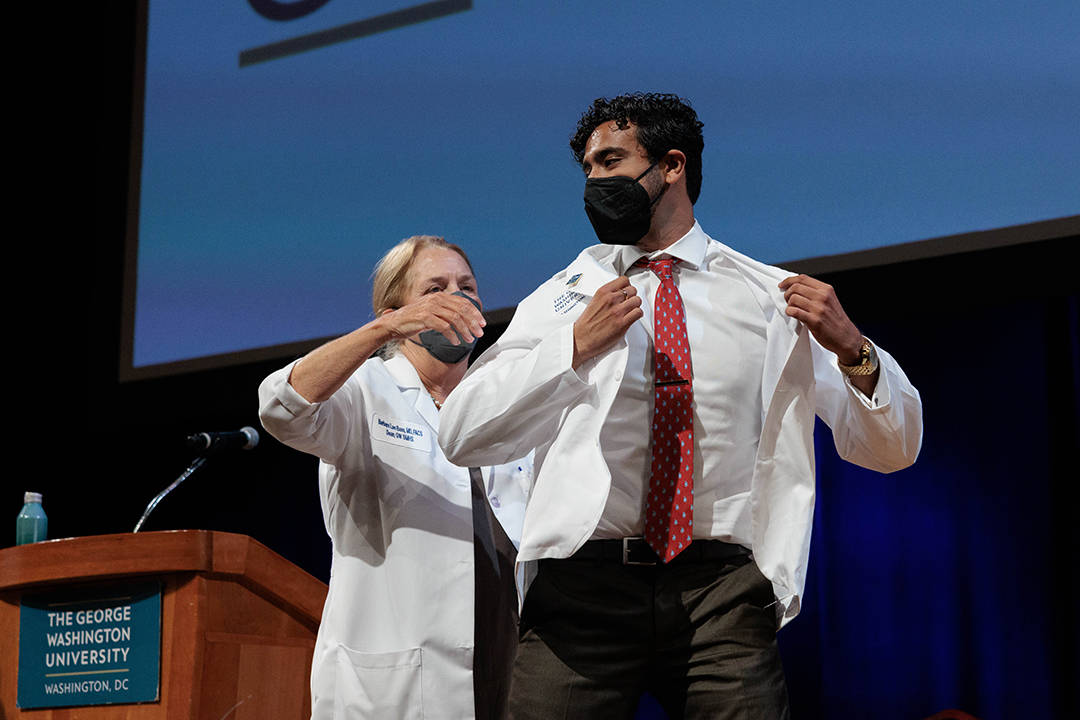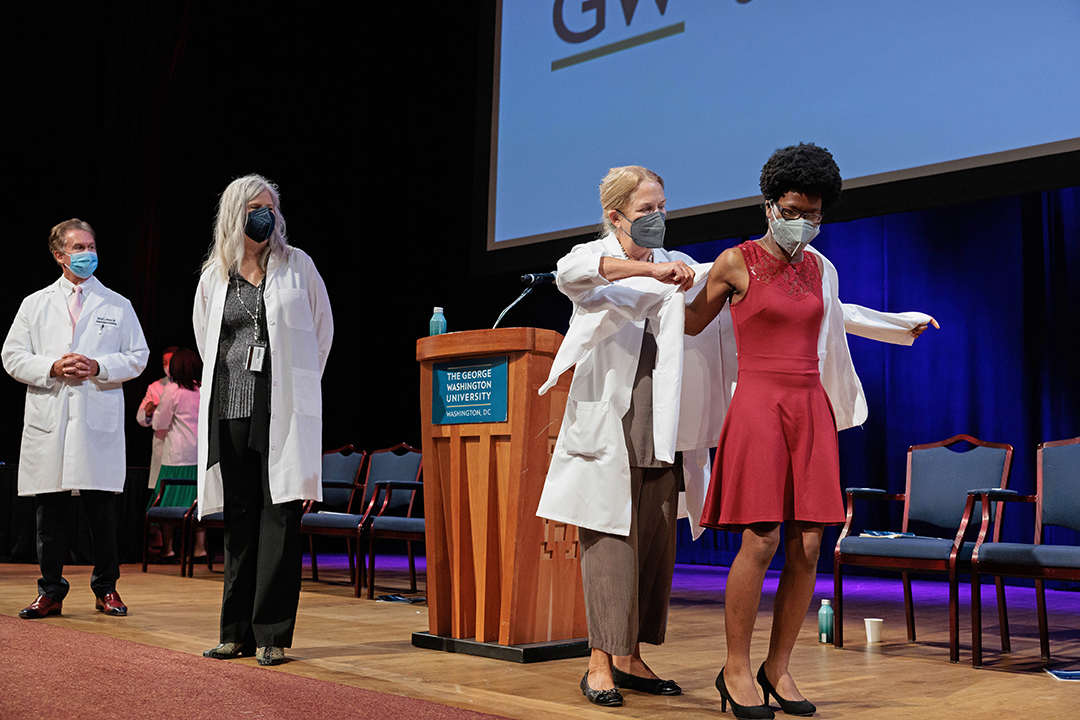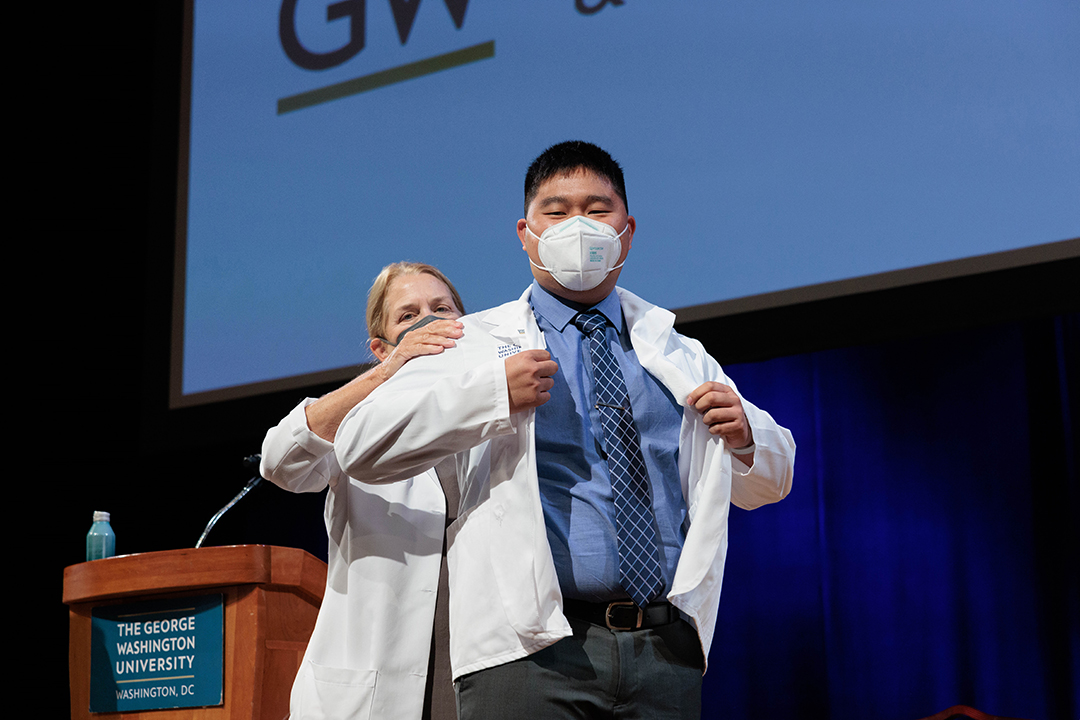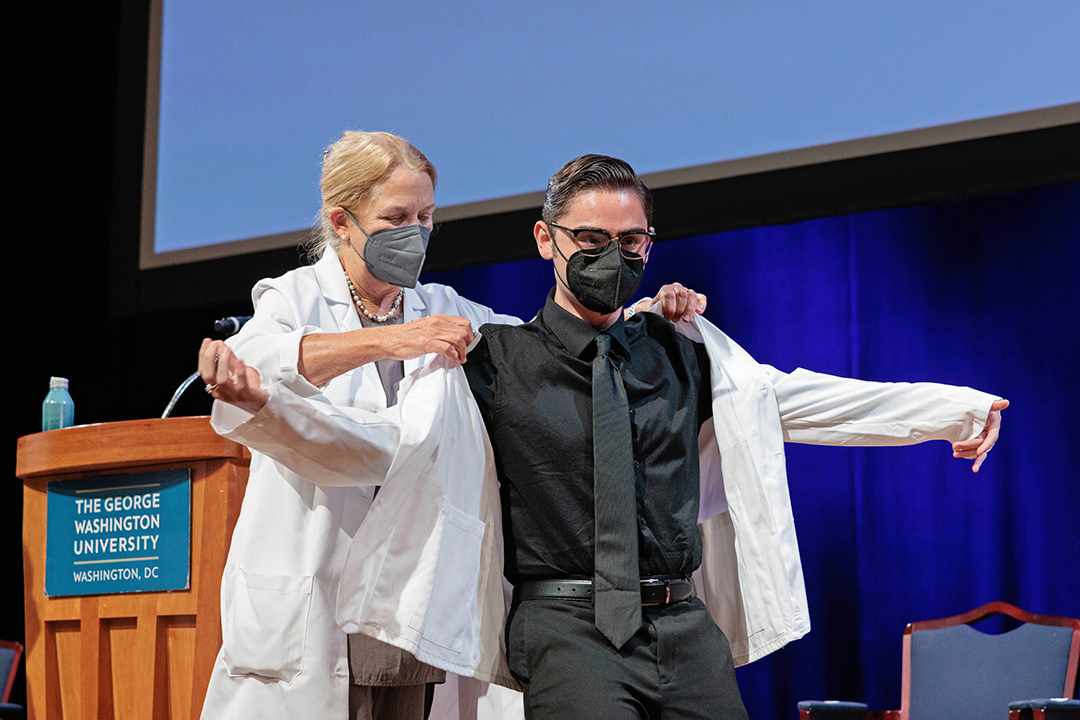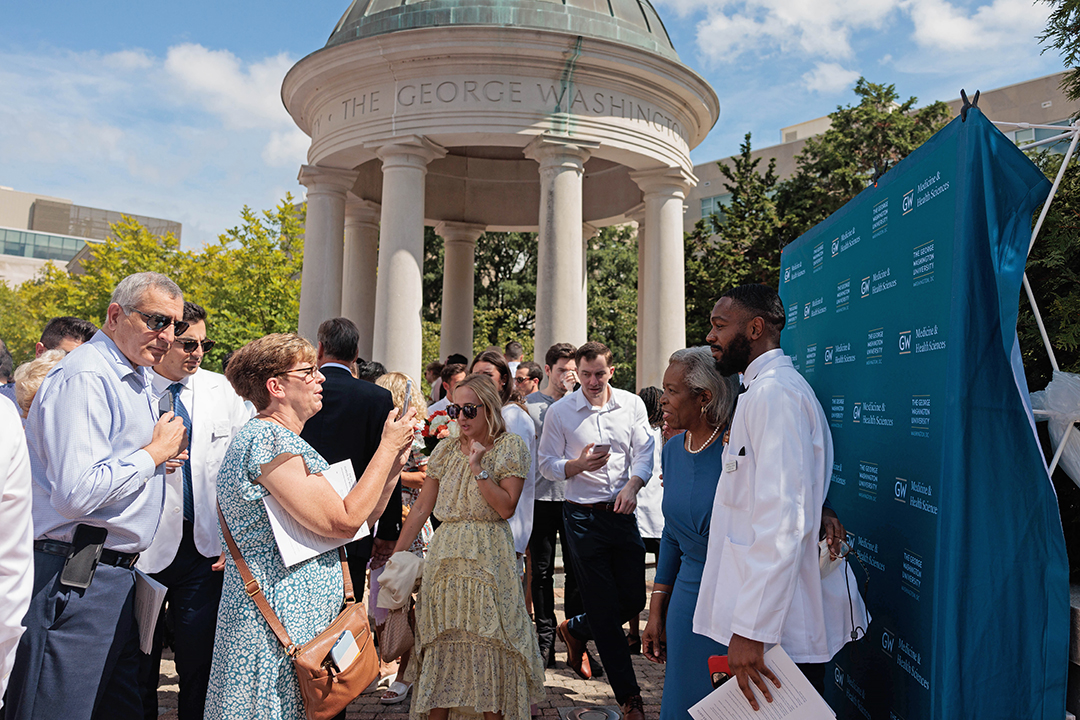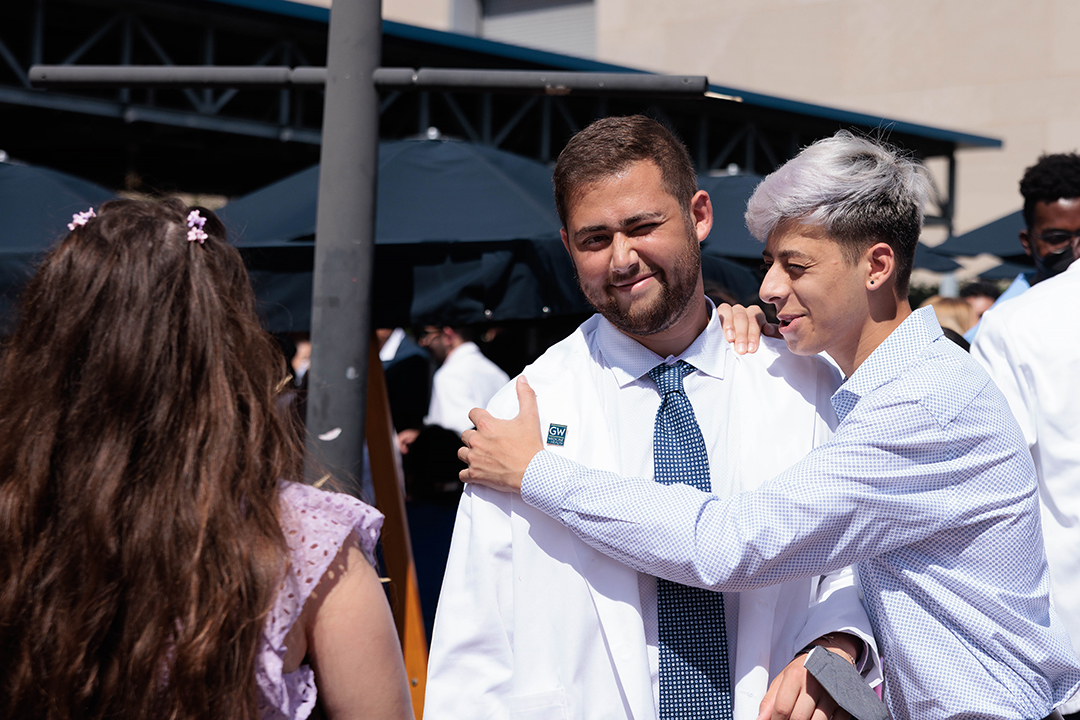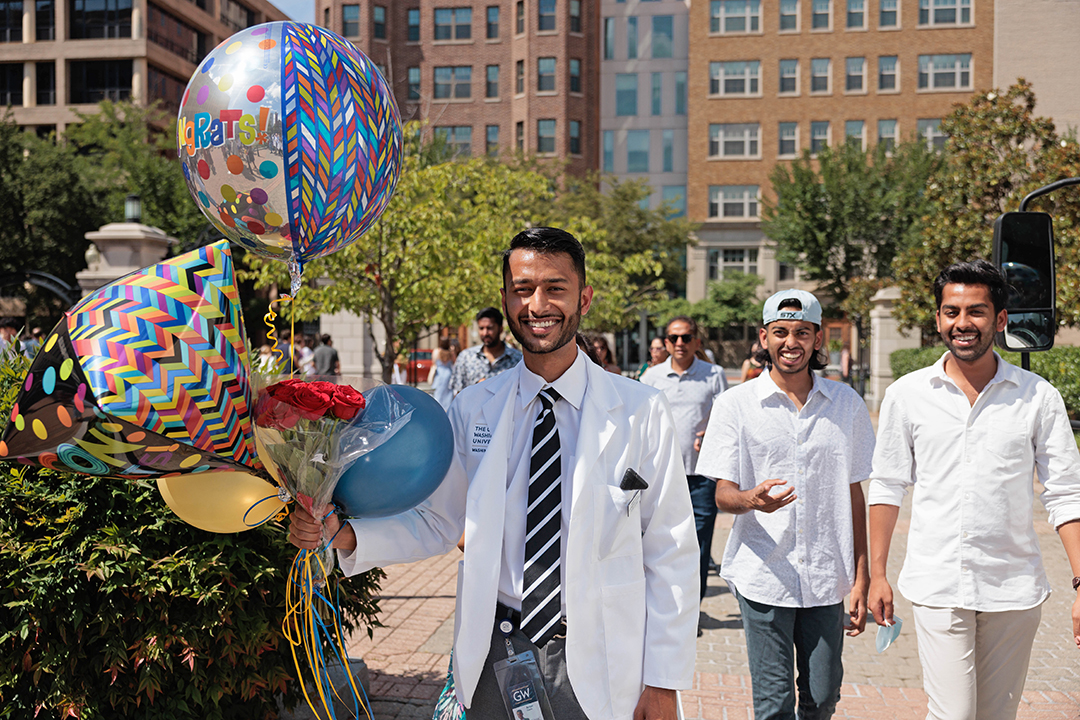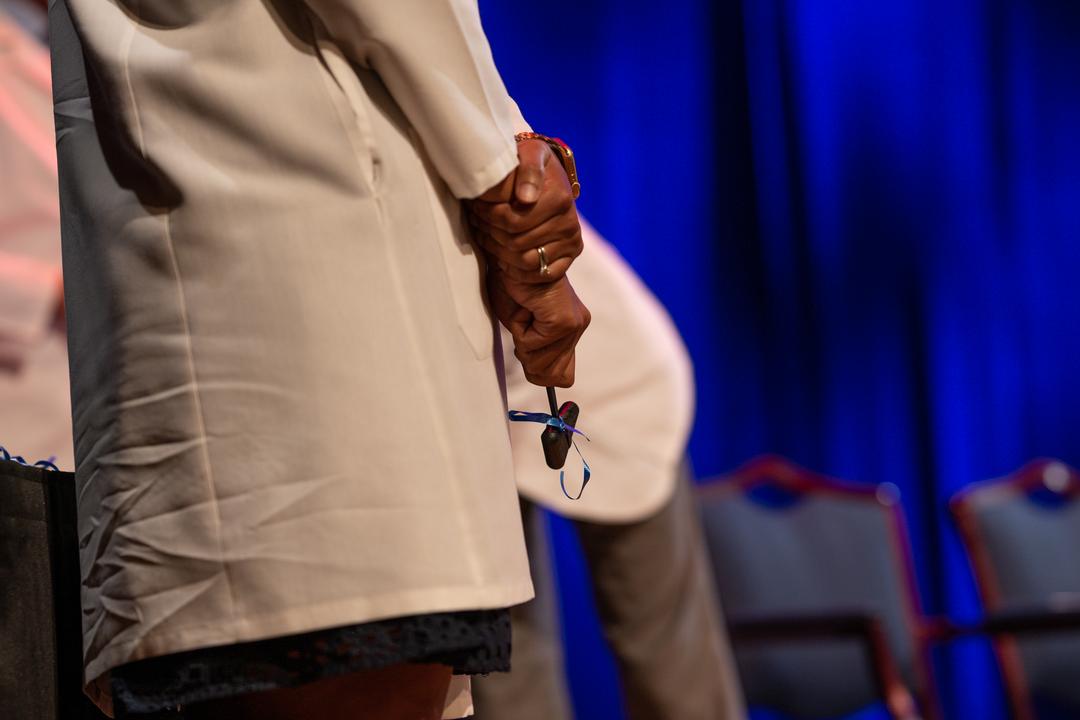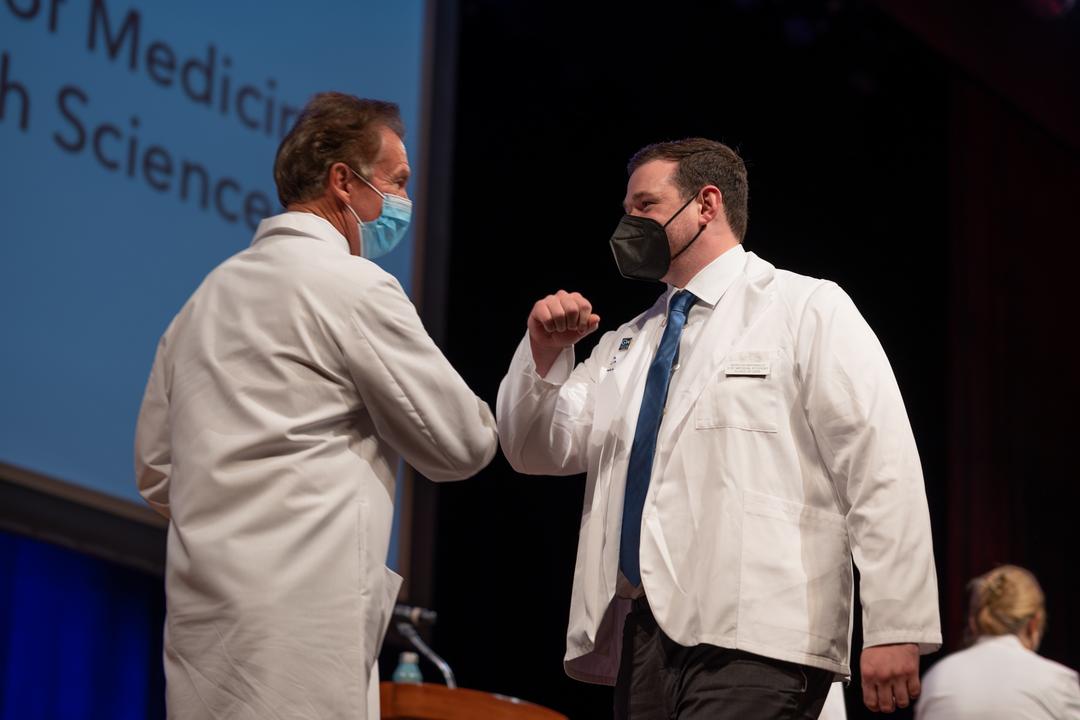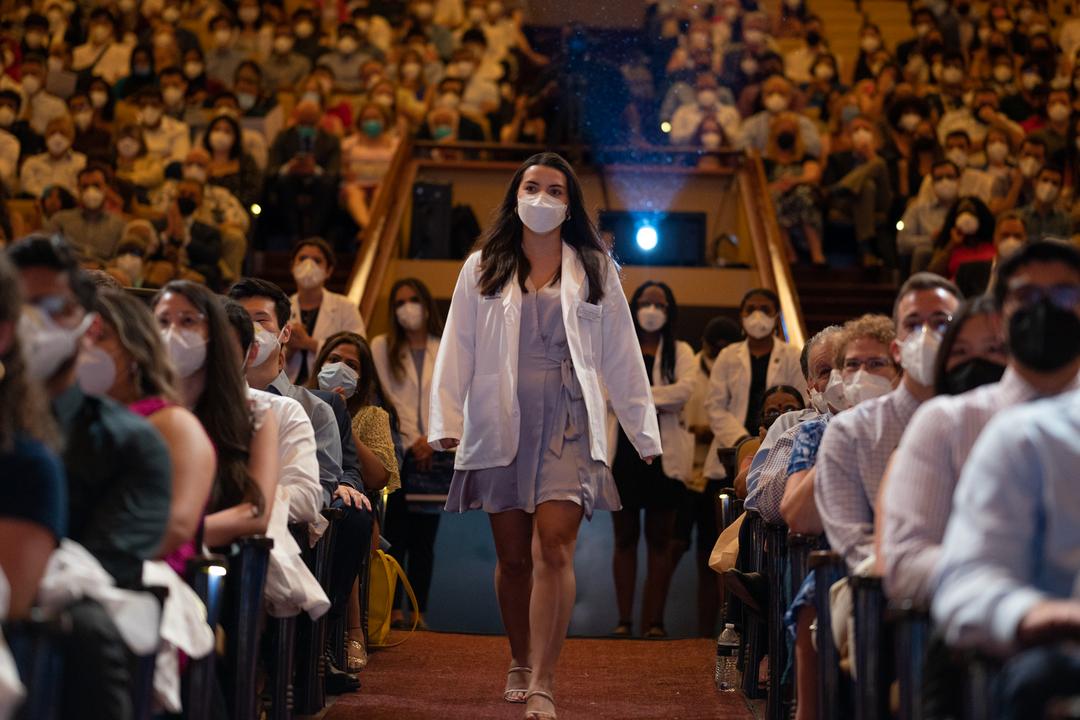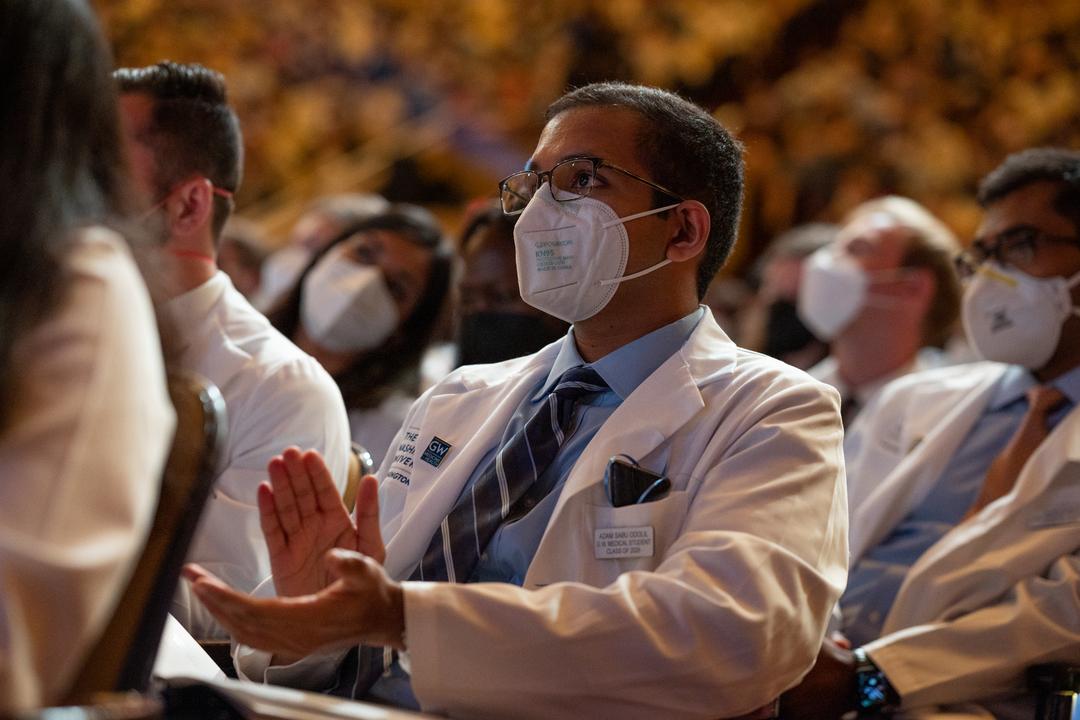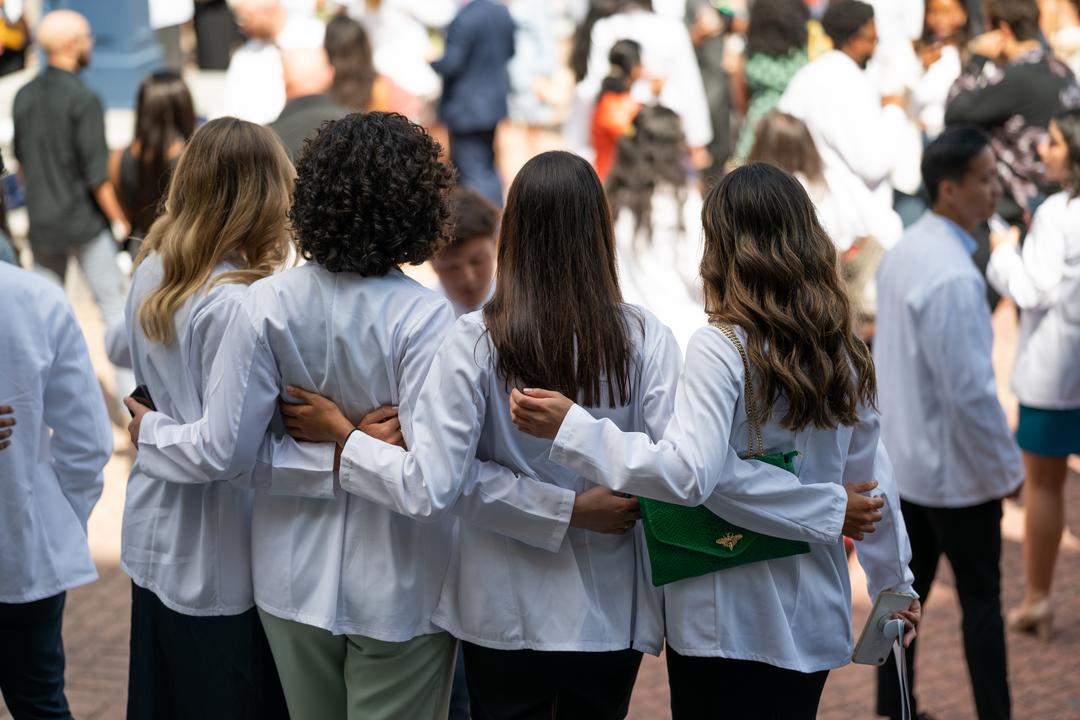By Thomas Kohout
Family and friends filled the aisles of Lisner Auditorium to witness the George Washington University School of Medicine and Health Sciences (SMHS) medical doctor program Class of 2026 take the first symbolic step on their path toward becoming physicians during the 24th annual White Coat and Honor Code Ceremony.
The event was the most widely attended ceremony in school history, said Barbara Bass, vice president of health affairs, dean of SMHS and CEO of the GW Medical Faculty Associates.
“This really is a public marking of your commitment as physicians,” she told the students in her welcoming remarks. “As you put on that white coat for the first time, that widely recognized uniform of a physician, and as you recite that honor code with your faculty, you are announcing that you are taking on that burden, that responsibility, and that enormous privilege of being a physician.”
Bass advised the students that medicine can extract much from their lives. “It will demand time and energy, and you are going to face great sorrow in this business you’re taking on.” For all its hardships, she added, medicine is worth it. “In return, medicine rewards you with amazing joy, knowledge, wisdom and human connections of unimaginable intensity.”
Continuing a two-decade tradition, first-year SMHS medical students receive their white coats, as well as a commemorative reflex hammer, and recite the honor code. The event is sponsored by the GW Medical Alumni Association and the White Coat Initiative, which provide financial support for the white coats, supplies used during Community Service Day, and educational technology and software. This gift allows SMHS alumni to forge relationships with students entering the field and to welcome them into the professional community.
This year’s class of 181 students from 25 states, Washington, D.C., Canada, and China represented 76 universities and included 23 GW alumni and SMHS legacies. The class brings an impressive list of accomplishments — advanced degrees and research experience — and boasts AmeriCorps volunteers, Fulbright scholars, nurses, EMTs, medical scribes, hospice workers, military veterans, a lawyer, and an Olympic speed skater. The Class of 2026 is the school’s most diverse yet, with 52% women and 65% identifying as non-white.
In his remarks, Senior Associate Dean for M.D. Programs Richard Simons reminded the audience that the incoming class is entering their training at a time of seismic change in medicine. However, at its heart, medicine is a humanistic discipline with the patient at the center.
“This ceremony is a reminder of our prime goal, which is to serve our patients,” he said.
He added, “If I could leave you with one piece of advice today it’s this— be curious. I believe it’s curiosity [that] converts patients into people we can empathize with. It advances both the science and the art of medicine.”
This year’s student speaker was fourth-year medical student Nicolas Leighton, who offered his insight and experience to the class. A self-described “huge Marvel comics fan,” Leighton recalled feeling like a superhero the first time he donned his white coat.
“I remember thinking it was some sort of a ‘with great power comes great responsibility’ type of moment,” Leighton said. “But looking back, putting on the white coat for the first time was more as if I was meeting a new person.”
Exhilarated, but also intimidated, he struggled to understand who this new Nicolas Leighton was and decided to stick to a script of dense medical jargon and what was deemed “professional.” It wasn’t until his third-year rotations, when he met his first patient, that he put it together. His patient, Mrs. M, was a kind woman in her 50s, who had just been diagnosed with stage 4 pancreatic cancer. Each day during morning rounds, what was supposed to be a 30-second talk about how she was feeling, somehow turned into a five-minute conversation about her life story and her aspirations.
“In these moments, I simply forgot about ‘medical Nick.’ I was simply Nick in a white coat, who was brought to this woman’s bedside to offer whatever support and comfort I could.
“My message to you today is, the white coat is not your superpower,” he said. “You were each chosen for your talents, experiences, and perspectives, and it has earned you a seat here today. Challenge yourself every day to hone your medical knowledge, just as much as you do your radical individuality.”
The keynote address for this year’s ceremony was delivered by Julie E. Bauman, director of the GW Cancer Center, associate dean of cancer, and professor of medicine.
“I truly view medicine as a sacred mission,” she told the students. She added, however, that listening to Dean Simons’ introduction, and the recitation of her lengthy academic resume, left her underwhelmed.
“Listening to my introduction, I found it dry and devoid of anything that is my true North Star,” Bauman said. Despite her many achievements and leadership positions, it didn’t reflect the spirit of why she chose the life of a physician.
“I set out to become the best physician I could be, bringing together the intersection of science and humanism.”
Bauman recalled her true North Star moment, one she would turn to time and again for inspiration and motivation when the challenges of being a physician grew too heavy. During her first year as a medical student, a gynecologic oncologist presented a lecture on the doctor-patient relationship, describing the many aspects of that connection.
“Then we got to a Q & A, and somebody in my class asked her, ‘How do you live in a profession where you have to give bad news to a patient every single day?’ ” Bauman recalled. “She stepped out from behind the podium and said, ‘Because I love my patients.’ That was it for me. And that is my North Star.”
Following the remarks, one by one, the students crossed the stage to put on their white coats, sign the honor code, and then recite the SMHS oath, solemnly declaring their commitment to scientific integrity, ethical practice and service to patients.


